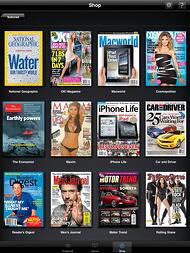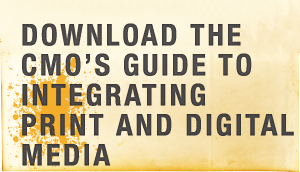Unless you have a strong aversion to dealing with reality you’ve no doubt become aware of the fact the human race has gone mobile. Smartphones were adopted in a relatively short amount of time and have great influence on consumers. Additionally, this increased mobile usage has led to an increase in the consumption of digital content.
 According to the Magazine Media Factbook 2013/2014, more than 90% of American adults still read magazines and an increasing number of them are doing so on tablets and smartphones. The report goes on to say that one in 10 tablet owners read digital magazines daily, and magazine apps frequently top the iPad charts in categories like Lifestyle, Health and Fitness, and News.
According to the Magazine Media Factbook 2013/2014, more than 90% of American adults still read magazines and an increasing number of them are doing so on tablets and smartphones. The report goes on to say that one in 10 tablet owners read digital magazines daily, and magazine apps frequently top the iPad charts in categories like Lifestyle, Health and Fitness, and News.
The factbook shared some other eye-opening figures that speak to the trend of consumers demanding and consuming more and more digital media in the form of online magazine publications:
- 80% of respondents took some kind of action after downloading the digital version of a magazine such as visiting the magazine’s website, social media sites, or recommending the magazine to a friend or family member.
- It’s predicted that by 2016 59% of U.S. Internet users will own a tablet.
- 10% of tablet owners read digital magazines almost every day, and 13% of tablet users read digital magazines at least once per week. 17% of tablets users said they read digital magazines one to three times per month, while 40% read digital magazines once per month.
What do these figures mean to marketers considering advertising in a digital magazine? Digital magazines offer tremendous benefits unmatched by other media channels.
1. Reach Readers beyond Regional Boundaries
Digital magazines have the ability to reach readers on a global scale. They have become a powerfully engaging way to keep a reader’s interest while maintaining loyalty, even when readers have moved to another location. Digital magazines allow publishers to send content to readers no matter their location.
2. Faster Publishing and Distribution
Digital magazines reach their audience in a very short amount of time, and online readers often consume the edition the very same day it’s distributed.
3. Content Flexibility
One of the advantages digital magazines have is they can contain an increase in the number of pages without changing the layout or having to condense text to work with a particular format. Also, publishers do not incur additional costs for paper or printing additional pages in a digital version of a magazine, which means no additional fees are passed on to advertisers.
4. Digital Magazines Don’t Kill the Printed Versions
Some would have you believe digital publishing replaces print, but this is simply not so – there is room for both printed and digital magazines. In fact, the MPA factbook reports 87% of those interested in reading magazines on a mobile device still want a printed copy. Owning the digital publication of a magazine does not stop readers from wanting the printed copy as well.
5. Better Understanding of Readers
True customer satisfaction often relies on two-way communication, and digital publishing software allows digital magazines to track reader engagement and identify preferred topics, which can then enhance future publications. When content is created around the audience’s interests, they are more engaged and more apt to click on advertisements distributed throughout the content.
6. No Revenue Loss from Unsold Copies
With digital magazines, publishers don’t have to worry about the expense and logistics associated with unsold copies. Again, the more money a publisher saves, the more savings will be passed on to advertisers.
7. Built-in Metrics
Thanks to ad-management and ad-serving technology, publishers can tell advertisers exactly how many readers clicked on ad links. Advertisers are also not limited to plain text links but can now use and get reporting back from rich media such as videos and interactive links.
Digital magazines offer an enhanced brand advertising experience because they place the reader in a highly designed editorial context which drives reader engagement and purchase intent. Publishers can then use special tracking software that uncovers actionable insights into how audiences engage with editorial and advertising content, which allows advertisers to tailor future campaigns for maximum results.
RELATED POSTS:





